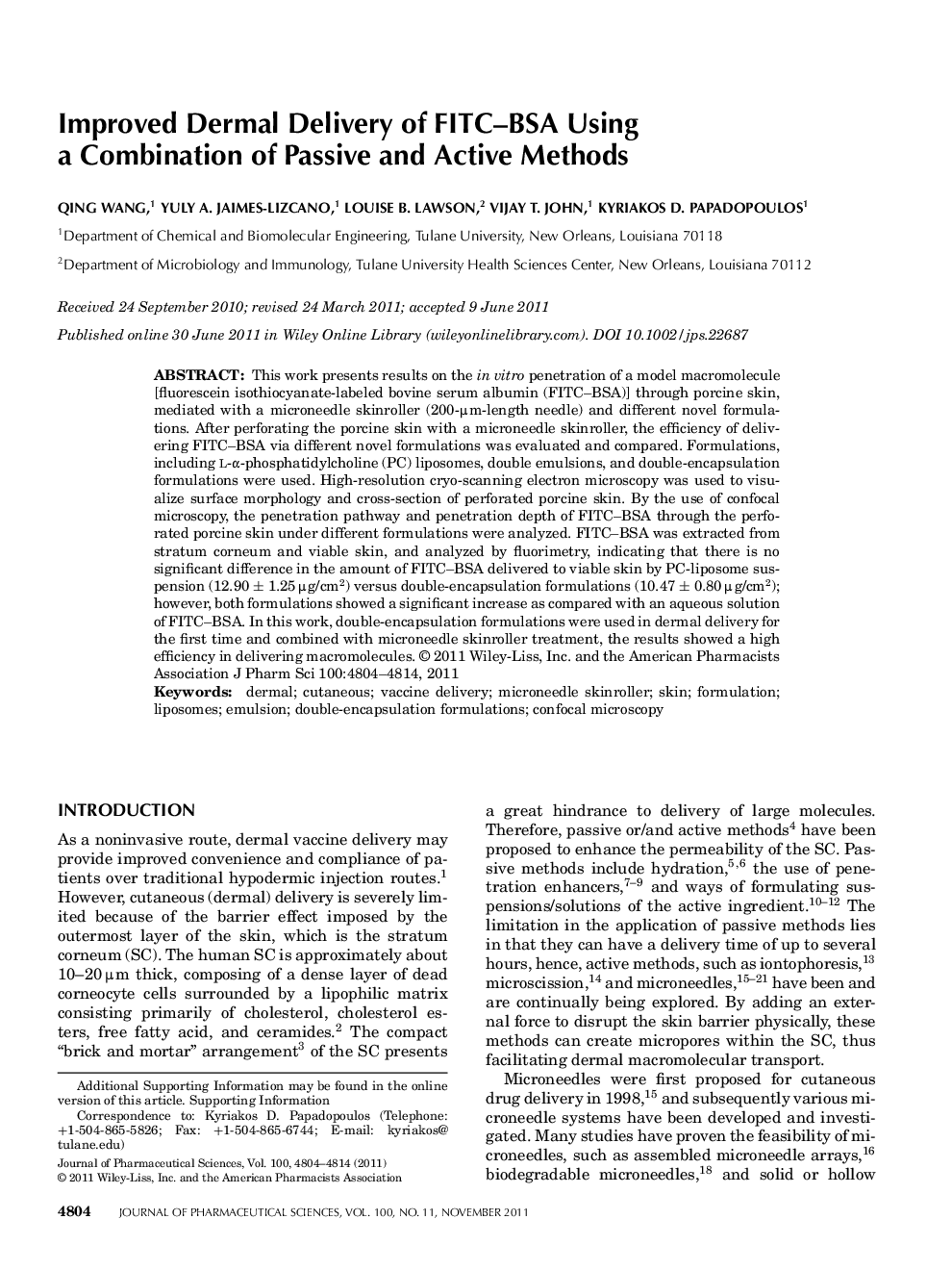| Article ID | Journal | Published Year | Pages | File Type |
|---|---|---|---|---|
| 2486180 | Journal of Pharmaceutical Sciences | 2011 | 11 Pages |
Abstract
This work presents results on the in vitro penetration of a model macromolecule [fluorescein isothiocyanateâlabeled bovine serum albumin (FITC-BSA)] through porcine skin, mediated with a microneedle skinroller (200âµmâlength needle) and different novel formulations. After perforating the porcine skin with a microneedle skinroller, the efficiency of delivering FITC-BSA via different novel formulations was evaluated and compared. Formulations, including lâαâphosphatidylcholine (PC) liposomes, double emulsions, and doubleâencapsulation formulations were used. Highâresolution cryoâscanning electron microscopy was used to visualize surface morphology and crossâsection of perforated porcine skin. By the use of confocal microscopy, the penetration pathway and penetration depth of FITC-BSA through the perforated porcine skin under different formulations were analyzed. FITC-BSA was extracted from stratum corneum and viable skin, and analyzed by fluorimetry, indicating that there is no significant difference in the amount of FITC-BSA delivered to viable skin by PCâliposome suspension (12.90 ± 1.25 µg/cm2) versus doubleâencapsulation formulations (10.47 ± 0.80 µg/cm2); however, both formulations showed a significant increase as compared with an aqueous solution of FITC-BSA. In this work, doubleâencapsulation formulations were used in dermal delivery for the first time and combined with microneedle skinroller treatment, the results showed a high efficiency in delivering macromolecules. © 2011 WileyâLiss, Inc. and the American Pharmacists Association J Pharm Sci 100:4804-4814, 2011
Related Topics
Health Sciences
Pharmacology, Toxicology and Pharmaceutical Science
Drug Discovery
Authors
Qing Wang, Yuly A. JaimesâLizcano, Louise B. Lawson, Vijay T. John, Kyriakos D. Papadopoulos,
